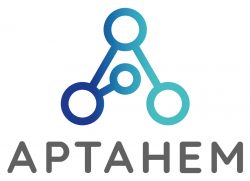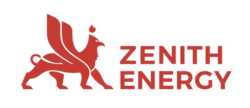Irisity AB (”Irisity” or ”the Company”) published its Q3 report for 2024 on the 4th of November 2024. Irisity reported a solid performance, with strategic initiatives now fully implemented, bringing the Company one step closer to becoming a profitable growth entity generating positive cash flow. The strategic initiatives include a more commercially oriented organization, a stronger emphasis on a partner-based go-to-market strategy aimed at shortening the working capital cycle, reducing the opex cost base through streamlined R&D operations, as well as a clear focus on expanding the recurring revenue streams. Overall, these activities are expected to create a solid foundation for further growth. With a more efficient cost structure in place, Analyst Group believes that Irisity is making significant progress toward profitability.
Robust growth in invoicing and collections Y-Y
Irisity’s net sales came in at SEK 30.3m (32.3) in the Company’s third quarter of fiscal 2024, marking a Y-Y decrease of -6.3%, but a 17% increase Q-Q. It is worth noting that the quote-to-cash process varies substantially across different segments, as the level of complexity is reflected in the sales cycle. Additionally, Irisity generates both one-off revenues and recurring revenue streams through pre-payments and accrued income. Therefore, analyzing the invoicing and collections provides a more comprehensive view of the underlying business development, as it offers a more nuanced perspective of the full quote-to-cash process. The invoicing amounted to SEK 35.4 MSEK during Q3-24, a solid growth of 11% compared to the same period the previous year, while collections demonstrated a 53% growth Y-Y, reaching SEK 26.2m during the third quarter. In light of the strong invoicing during the previous quarter (Q2-24), which stood at SEK 39.3m, it is positive to observe the conversion into collections.
Solid Pipeline Exceeding SEK 180m
An additional factor to examine further is the sales pipeline, including 650 opportunities with a total value exceeding SEK 180m. This KPI could be derived from potential deals that Irisity is currently processing, spanning various stages of the sales funnel. Analyst Group believes that the pipeline serves as a testament to Irisity’s strong customer offerings, indicating robust demand and a solid growth runway ahead.
Concerning recurring revenues, the MRR amounted to SEK 4.3m (4.5), representing a flat sequential development Q-Q. The Y-Y decrease was attributed to FX-effects as well as delays in enterprise customer project installations. The Company expects that investments made in 2024 will yield results in terms of MRR growth during 2025, as Irisity plans to place stronger emphasis on central monitoring stations, enhance its Security as a Service offering in Sweden, and focus on increasing Software Upgrade Plans (SUP) for existing customers.
Strong Gross Margin and Short-Term Increase in Personnel Costs
During Q3-24, the Company achieved a gross margin of 85.2% (82.4), which is an improvement both Y-Y as well as Q-Q, where the gross margin reached 82.4% and 75.2%, respectively.
Examining the opex cost base, personnel costs amounted to SEK 30.1m (24.1), where the Y-Y increase is attributed to the acquisition of Ultinous being fully consolidated during the quarter (SEK 2.2m), as well as one-time effects stemming from layoffs, impacting the personnel costs with additional SEK 2.8m. All in all, comparing the numbers with a normalized Q2-24, the personnel costs in Q3-24 were SEK 5m lower, indicating that the streamlining activities are bearing fruit. For the full year 2025, Irisity expects that the reduced headcounts should yield annual cost savings of SEK 25m, related to both R&D and service personnel.
Regarding R&D, the Company has optimized and reorganized the development hubs into three leaner and more focused teams, specialized on specific customer business segments. Apart from shifting personnel from Tel Aviv and Gothenburg to Budapest to reduce costs, the focus on generative AI is expected to speed up innovation and improve the reliability of product delivery, which in turn is expected to yield a greater ROI on future investments. The impact of these streamlining activities is also seen in the reduction of capitalized work for own account, which stood at SEK 4.2m during Q3-24, down from SEK 9.6m during Q3-23.
Other operating income, as well as other operating costs, represent non-cash related line items which is attributed to currency revaluation of the loan to Agent Vi, which is unrealized and varies, depending on the exchange rate. During Q3-24, the net effect of the FX-effect amounted to a negative SEK 4.2m, hampering the EBITDA result in the P&L. The Company are planning on converting the loan to Agent Vi into equity, which will reduce the fluctuations stemming from the currency effect, and thereby increase the predictability of the cost base.
All in all, the EBITDA for the third quarter amounted to SEK -14.3m (1.4) and adjusted for capitalized work and currency revaluation effects, the EBITDA result amounted to SEK -14.2 (-8.2).
Rights Issue will Strengthen the Balance Sheet
Following the end of the third quarter, Irisity announced a rights issue which, if fully subscribed, is expected to raise SEK 70.6m before transaction costs and set offs. The rights issue is guaranteed to approx. 80%, and the net proceeds are intended for the repayment of a bridge loan (SEK 21.9m), working capital needs (SEK 20.7m), as well as SEK 5m allocated for market expansion initiatives, including a focus on generative AI. Additionally, approx. SEK 15.3m are intended for set offs, from Stockhorn Capital AB and Anders Trygg, via company.
During Q3-24, Irisity reported cash flow from operating activities (OCF) of approx. SEK -17.5m (-10.9), of which SEK -9.4m was due to changes in working capital, corresponding to OCF of approx. SEK -5.9m per month. Given the cash balance at the end of Q3-24 of SEK 3.8m, along with available credit lines of approx. SEK 3m, the rights issue is essential for reinforcing the balance sheet and providing additional financial flexibility to support growth initiatives. As the Company ramps up growth efforts in segments with shorter sales cycles, such as AI Products and AI Services, Analyst Group anticipates a shorter quote-to-cash process, thereby reducing the working capital cycle.
Concluding Remarks About the Report
In conclusion, Irisity’s Q3 report highlights the effective execution of strategic initiatives implemented over the year. With a streamlined cost structure, more efficient R&D teams, and a clear partner-driven go-to-market strategy, Irisity is well-positioned to leverage the Company’s scalable platform and gradually move towards positive cash flows as the strong pipeline of potential deals converts into revenue. The current rights issue is expected to further reinforce the Company’s financial position, providing a solid foundation for continued growth.
Analyst Groups view of Irisity
Irisity is a leading provider of AI-driven video analytics solutions, specializing in advanced software that transforms conventional security cameras into intelligent detection systems, all while upholding stringent privacy standards. With a presence in more than 90 countries, Irisity addresses a global market through the Company’s three primary segments: AI Solutions, AI Products, and AI Services. With the strategic acquisition of Ultinous in H1-24, Irisity has enhanced its AI capabilities, integrating cutting-edge generative AI technologies aimed at capturing opportunities in the mid-market segment, which paves the wave for substantial growth potential in the coming years. Additionally, the consolidation of R&D units is expected to yield a more efficient cost structure, which is estimated to reduce the opex cost base. With a highly scalable AI platform and a clear roadmap towards positive cash flows, Irisity is well-positioned to capitalize on the expanding AI market. The Company has implemented several key initiatives with the objective to drive profitability and achieve positive cash flow, including the appointment of a commercially focused leadership team, a strategic shift towards faster-to-market segments to expedite the quote-to-cash cycle, and an increased focus on recurring revenue streams.




